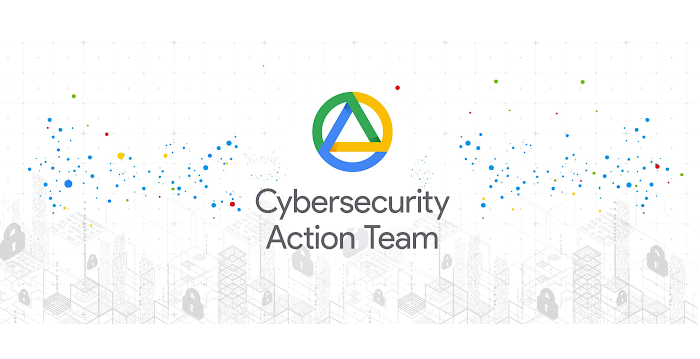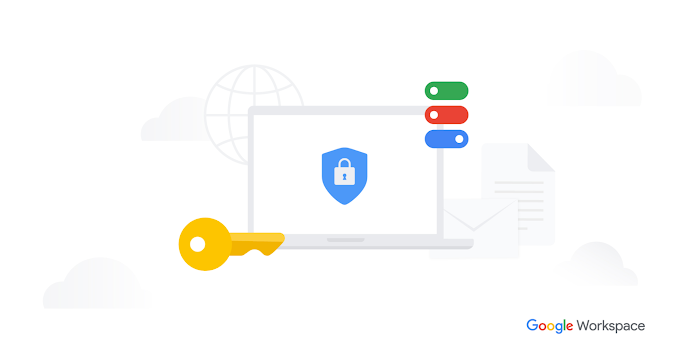How two London borough councils use Chrome Enterprise and G Suite for modern collaboration
David Grasty
Corporate Head of Digital Transformation, Kingston and Sutton London Borough Councils
Editor’s note: David Grasty is the Corporate Head of Digital Transformation at two councils located in Southwest London. The councils employ roughly 5,000 council workers across 114 sites to keep local services operating for a combined 400,000 residents. This is how Grasty helped his IT team operate more efficiently, while giving his workers a more modern work experience using G Suite and Chrome Enterprise.
About six years ago, our Kingston and Sutton councils began sharing IT services—a step that helped us save money and reduce our IT workload. The process also provided our employees with a more modern work experience, so they can keep local services for borough residents up and running, like libraries, hospitals, schools, sustainable transportation and environmental health programs.
Using technology to help teams collaborate
We knew we wanted to replace our Windows 7 computers with cloud-based technology that allowed our employees to work together without interruption, including everyone from social workers to hospital staff—so we chose G Suite. We replaced our legacy email solution that operated on each borough’s individual servers and transitioned to Gmail with help from a tool called CloudMigrator offered from our Google Partner, Cloud Technology Solutions. After our council employees got used to working in Gmail—which many already knew from personal use—they began to work in other G Suite apps. Our work habits started to change.
In one meeting, we discussed areas of responsibility for different council organizations. I created a spreadsheet in Google Sheets to collaborate on ideas and others jumped into the document to add additions. We’d never make progress that quickly if we shared documents back and forth in email attachments. Similarly, it became second nature for people to connect face-to-face in video meetings in Meet or to send messages about projects in Chat. It sounds like such a simple change, but being able to attend meetings from home or from different administrative buildings, has saved people thousands of hours of commuting and walking time.
Providing flexible devices to help “sitters,” “walkers,” and “runners”
Our goal as an IT team is to be seen as more than just “wires and Wi-Fi.” Instead, we want to be integral partners for digital transformation. With G Suite technology in place, we were primed to offer flexible work options for employees, like shared desks or the ability to work from home. With that said, many employees work in historic buildings which can’t easily be renovated. The devices we chose needed to be flexible, installed and usable from anywhere.
We rolled out 3,800 Chromebooks in 80 locations, followed by about 1,700 Chromeboxes that replaced PCs. It was simple to deploy Chrome devices—I don’t think we could have rolled out the same number of Windows laptops in only four months. We knew that Chromebooks and Chromeboxes would work right out of the box in just a few minutes, with the correct policies applied.
To ensure success with the rollout, we carefully matched device types to each worker depending on their role and preference, classifying workers as: “sitters,” “walkers,” or “runners.”
- Sitters have assigned desks, so they received Chromeboxes with large displays that help them get their work done.
- Walkers work at their desks but like the freedom to work from home, so they received Acer Chromebooks, which are more portable.
- Runners frequently travel throughout the boroughs and offices, so they received Acer Spin Chromebooks, which can convert into tablets for presentations. The Acer Spin devices helped people in the field connect more easily with local residents, who might not be able to visit council offices.
With Chromebooks and G Suite, we’re not tied down to particular offices and data centers because just about every application we use is web-based or is a G Suite app. If we need to use legacy apps, such as council tax and planning systems, we can access them through Chrome’s Legacy Browser Support. Legacy Browser Support allows us to seamlessly access from Chrome just the legacy apps we need to in the required legacy browser, limiting the time we spend in unsecure browsers, while also not stalling what we need to get done in those legacy applications.
What I also particularly love about Chrome devices is that they require very little administration. With Chrome Enterprise Upgrade they’re secure and manageable right out of the box: we simply set policies within the Google Admin console, and from there we can track device usage, choose network settings, and even lock down devices.
Evolving workspaces to support modern collaboration
In our two main buildings, we’ve turned very traditional offices into flexible spaces where workers can set up their Chromebook at any open space. We have fewer desks now; many people work from home and join video meetings.
When I see employees working efficiently in the cloud, instead of pushing bits of paper around, I’m confident we’ll have greater impact on Kingston and Sutton residents.



